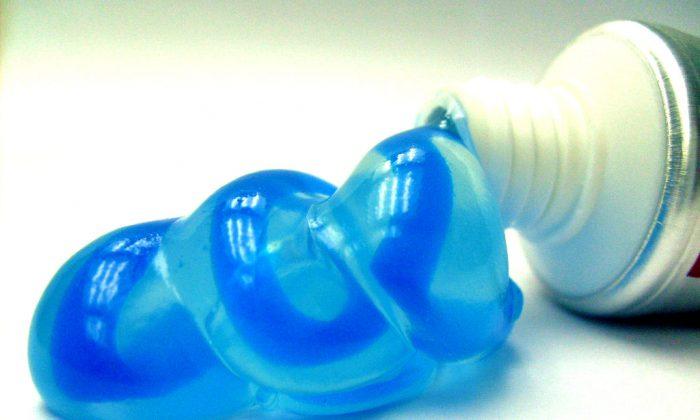When you hear the term “circulatory system,” what comes to mind?
Most of us think of the vascular system, the amazing array of arteries, veins, and capillaries through which the heart pumps 1,900 gallons’ worth of blood each day, in a circular loop. Few of us think of the other circulatory system, even though it’s twice as large as the vascular system and just as vital to our health. When this second circulatory system, the lymphatic system, is not working properly, our bodies cannot remove toxins, regulate the amount of fluid in our tissues, or fight viral, fungal, or bacterial diseases.

Our two circulatory systems work together. Dr. John Douillard describes the lymphatic system in these terms: “The lymphatic system is like the drains in your house and the [vascular system] is like the faucets”—an apt description.
- Fluid balance
- Fat absorption
- Immunological defense
1. Fluid Balance
When the heart pumps blood, the blood travels through arteries to arterioles (arterial capillaries), which connect to venules (capillaries of the veins). The blood then begins its journey back to the heart.But the vascular system is not a closed system. When the blood reaches the capillaries, fluid is released from the thin-walled capillaries and flows into all of the tissues in the body. This fluid, called interstitial fluid, bathes the tissues with gases and nutrients as it washes over the cells.
The cells absorb oxygen and nutrients and release their waste products back into the interstitial fluid. Ninety percent of the interstitial fluid is reabsorbed by the venous capillaries, to recombine with the blood and flow back to the heart. The other 10 percent of the interstitial fluid, along with proteins and other particles too large to pass through the capillary walls, is taken up by the lymphatic system. This fluid, now called lymph, flows through the lymphatic system and is filtered through the lymph nodes before being returned, ultimately, to the bloodstream.
2. Fat Absorption
The villi in the small intestines are tiny projections that facilitate absorption of nutrients from our food. Each villus contains capillaries from the venous system and the lymphatic system. While the nutrients are passed into the bloodstream, fats and fatty acids are absorbed by specialized lymphatic vessels. The lymphatic system carries the fats and fatty acids through its system until emptying them, along with lymphatic fluid, directly into the blood.
3. Immunological Defense
The lymph nodes, the spleen, and the thymus gland work together to defend the body from foreign invaders and pathogens.Lymph nodes are encapsulated tissues situated in many parts of the body. These nodes receive blood plasma and check it for foreign invaders. If needed, the node creates lymphocytes, which enter the bloodstream to fight off the foreign cells. The nodes also filter and purify the lymph fluid so that the fluid is clean when it is returned to the bloodstream.
Tonsils, adenoids, and Peyer’s patches are collections of lymph nodes strategically placed to fight foreign invaders. Tonsils fight disease at the throat, adenoids protect the body from inhaled pathogens, and Peyer’s patches protect the interior of the small intestines.
4. Thymus
Lymphocytes, which originate in the bone marrow, reach maturity and differentiation in the thymus gland. Many remain in the thymus gland, but others move throughout the lymphatic system, the peripheral tissues, and the blood. These are the cells that control immune reactions, combating viruses and cancer cells.5. Appendix
The appendix is also composed of lymphatic tissue. Though the organ does not appear to have a lymphatic function, we do finally understand its purpose. The appendix stores bacteria for the gut. If the gut bacteria is compromised, the appendix releases bacteria to begin the process of repopulation.6. Circulation of Lymph
The lymphatic vessels have valves (much like vascular veins) to keep the fluid moving in the right direction. The lymphatic system doesn’t have a big pump like a heart to force fluid through the vessels. Instead, our bodies rely on our muscles to move the fluid. Our diaphragms and rib cage as well as the blood pumping through our bodies, do assist in this movement. But body movement and exercise is the primary method of moving lymph. A sedentary lifestyle decreases lymph flow by 94 percent.
Why Is It Important To Move Our Lymph?
Lymph contains lymphocytes (white blood cells, including T-cells, B-cells, and natural killer cells) that seek out and kill pathogens. As the fluid is filtered through the nodes, a concentration of lymphocytes clean up the fluid before it is returned to the blood.How to Assist the Lymphatic System
The major way to move lymph through the body is through movement of any kind. Walking, bending, stretching–any and all movement will assist with lymphatic movement. To really get it moving, bounce. Jump up and down, jump rope, or for the best result, bounce on a rebounder for 15 to 20 minutes a day.You will also benefit from massage, including self massage. This will assist with flow and move any viscous fluid through the system. Find a massage therapist who is certified in lymphatic massage.
Be sure to hydrate well with clean (preferably spring) water. Eat foods that stimulate the lymphatic system, like beets, berries, and cherries. A healthy diet with plenty of vegetables and fruit supports healthy lymphatic function, as well as general health.
One of ayurvedic medicine’s most popular blood purifying herbs, manjistha, is known to make an excellent lymphatic tonic. Astragalus, echinacea, goldenseal, poke root, or wild indigo root tea are recommended. Treatments like blood detoxification, hot and cold hydrotherapy, and candida cleansing can also detoxify the lymph.
So get off the couch, jump up and down, and eat the right foods to detox your lymphatic system. It’s the least you can do for a system that works so hard to protect you.





